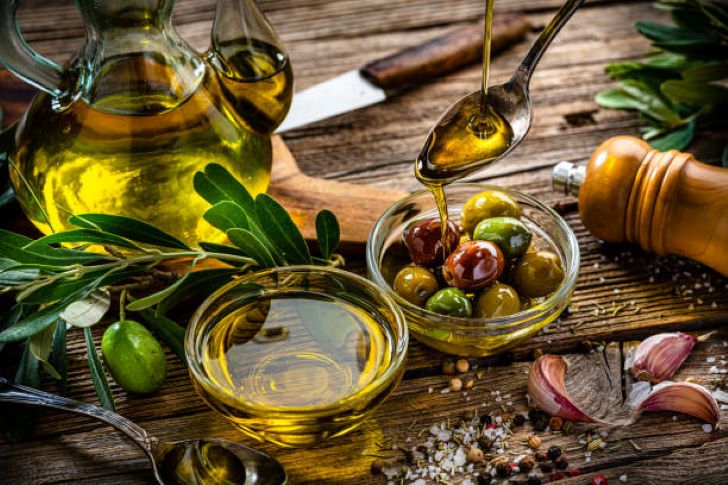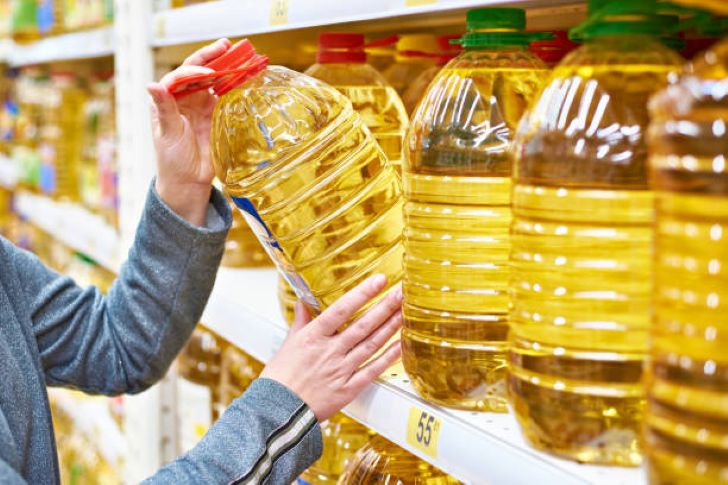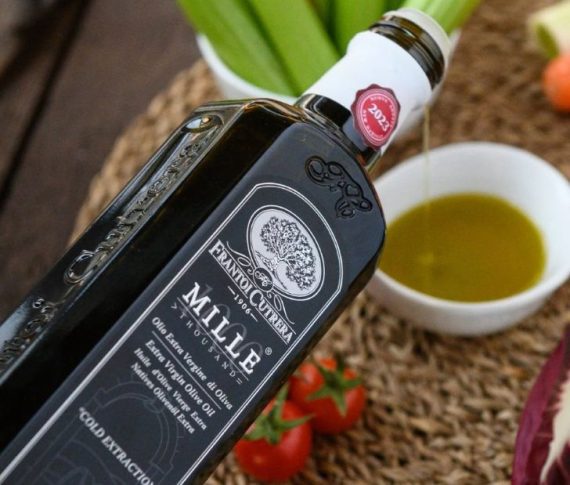Understanding the Difference Between Extra Virgin Olive Oil and Olive Oil
Olive oil, a staple of Mediterranean cuisine and widely appreciated for its health benefits, comes in various forms. Two of the most commonly encountered are Extra Virgin Olive Oil (EVOO) and regular Olive Oil (often labeled simply as “Olive Oil”). While they may seem similar at first glance, these oils differ significantly in production methods, flavor, nutritional content, and best uses.

Production Process
- Extra Virgin Olive Oil: EVOO is made from the first pressing of fresh olives and is extracted using mechanical means without the use of heat or chemical solvents. This cold-press process preserves the oil’s natural flavors, aromas, and nutrients. To be classified as “extra virgin,” the oil must also meet strict criteria regarding acidity levels (below 0.8%) and sensory qualities.
- Olive Oil: Regular Olive Oil, also known as “pure” or “refined” olive oil, typically blends refined olive oil and a small amount of virgin olive oil to enhance flavor. The refinement process involves heat and chemical treatments to remove impurities and neutralize the flavor, which results in a more neutral-tasting oil with a higher smoke point.
Flavor Profile
- Extra Virgin Olive Oil: Known for its robust, fruity, and peppery flavor profile, EVOO adds complexity and richness to dishes. Depending on the type of olives and region of origin, the taste can range from mild and buttery to bold and grassy.
- Olive Oil: Regular Olive Oil has a milder, more neutral taste due to the refinement process. This makes it a more versatile option for recipes where a strong olive flavor might not be desirable.
Nutritional Value
- Extra Virgin Olive Oil: Rich in antioxidants, polyphenols, and heart-healthy monounsaturated fats, EVOO retains more of the natural compounds that contribute to its health benefits, including anti-inflammatory properties.
- Olive Oil: While still a source of healthy fats, regular Olive Oil has fewer antioxidants and bioactive compounds due to the refining process. Its health benefits remain, but they are not as pronounced as those of EVOO.
Smoke Point and Cooking Applications
- Extra Virgin Olive Oil: With a lower smoke point (typically around 375°F or 190°C), EVOO is best suited for low to medium-heat cooking, drizzling over salads, finishing dishes, or as a dip for bread.
- Olive Oil: Thanks to its higher smoke point (around 465°F or 240°C), regular Olive Oil is better for high-heat cooking methods such as frying, sautéing, and baking.
Cost and Shelf Life
- Extra Virgin Olive Oil: EVOO is generally more expensive due to its labor-intensive production process and superior quality. It has a shorter shelf life because it’s more susceptible to oxidation.
- Olive Oil: Regular Olive Oil tends to be more affordable and has a longer shelf life because of its refined nature, making it less prone to spoilage.
Choosing the Right Olive Oil
Selecting between EVOO and regular Olive Oil depends on your culinary needs:
- Choose Extra Virgin Olive Oil for salads, dips, dressings, and dishes where the oil’s flavor can shine.
- Opt for Olive Oil for everyday cooking, frying, or when a milder taste is preferred.
Conclusion
Understanding the differences between Extra Virgin Olive Oil and Olive Oil allows you to make informed choices in the kitchen. Whether you’re aiming for maximum health benefits or simply looking for a reliable cooking oil, knowing their unique characteristics will help you elevate your culinary creations.





2 Comments